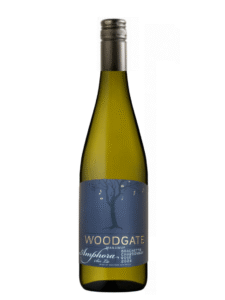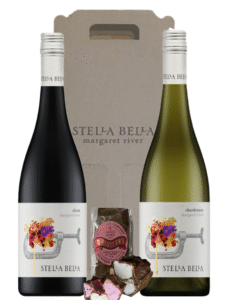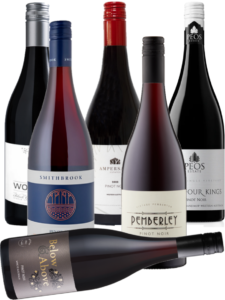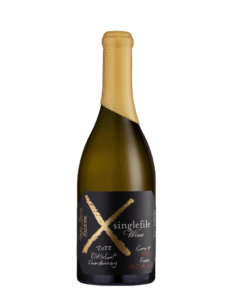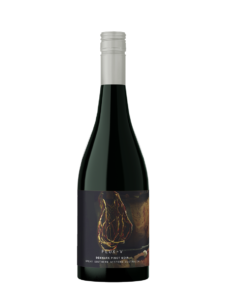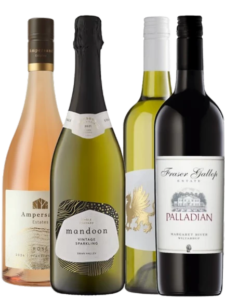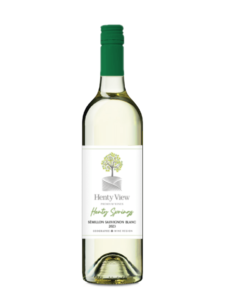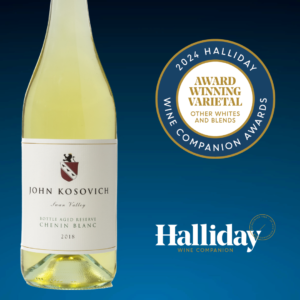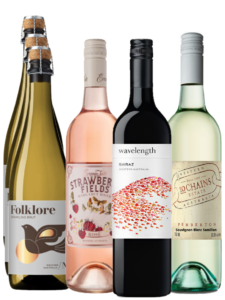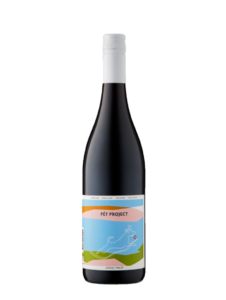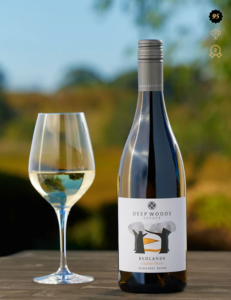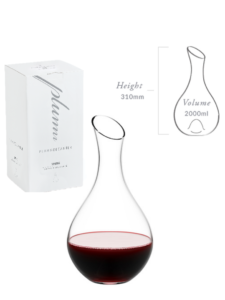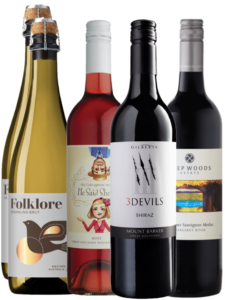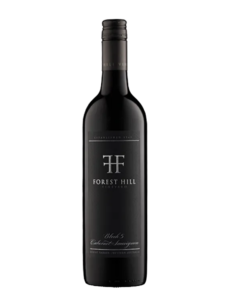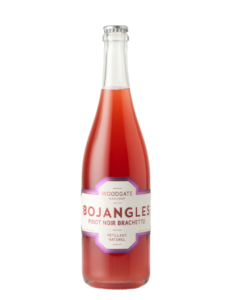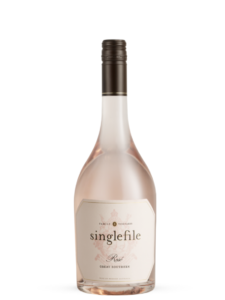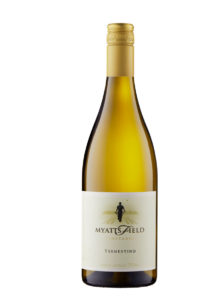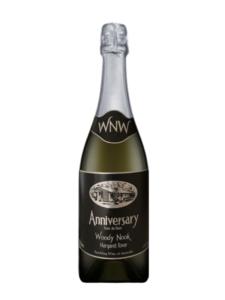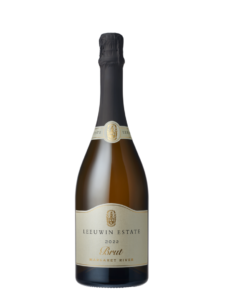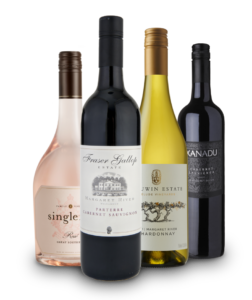Welcome to the World of Wine Terms
Whether you’re a seasoned wine enthusiast or just starting to explore the vast world of wine, understanding the language of wine can elevate your tasting experience. In this guide, we’ve broken down some of the most important technical terms you might encounter when exploring wines, particularly from the beautiful wine regions of Western Australia. From the unique terroir of Margaret River to the specialties of Frankland River, these terms will help you better appreciate the nuances of every bottle you uncork. So, whether you’re looking to impress your friends or simply enhance your next glass, we’ve got you covered with clear and simple explanations of all the wine jargon you need to know. Cheers!
Wine Terms Explained: From A to Z
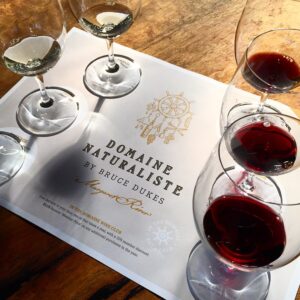
A – Acidity
Technical term: Acidity refers to the tart, crisp quality found in wine, often experienced on the sides of the tongue. It’s a key structural element in wine, often linked to freshness and ageability. Translation: Acidity in wine is what makes it feel refreshing or even a little sour. It’s the zing that makes you want to take another sip! Think of it like the tartness of a green apple.
B – Body
Technical term: Body refers to the weight or fullness of the wine, which is influenced by factors like alcohol level, tannins, and residual sugars. Translation: When we talk about the “body” of wine, we’re referring to how heavy or light it feels in your mouth. A full-bodied wine, like a bold red, feels more like milk or cream, whereas a light-bodied wine feels more like water.
C – Corked
Technical term: Corked wine refers to wine that has been contaminated by a compound called TCA (Trichloroanisole) that can make the wine taste musty or like wet cardboard. Translation: If a wine is “corked,” it doesn’t taste right—it’s like the wine has been ruined by something nasty in the cork, and it can smell musty or stale. It’s definitely not the wine you want to drink.
D – Decanting
Technical term: Decanting is the process of pouring wine from its bottle into another container to separate the wine from any sediment and allow it to “breathe.” Translation: Decanting is just letting the wine sit for a bit after opening it, usually in a fancy glass jug (called a decanter), to help it open up and taste better. It’s like letting a good song play for a while to warm up.
E – Estate Bottled
Technical term: Estate bottled means that the wine was made from grapes grown on the winery’s own land and processed at that same winery. Translation: If you see “estate bottled” on a label, it means the wine comes directly from the winery’s own vineyards, with all the grapes grown right there. It’s like homemade wine but on a bigger scale.
F – Fermentation
Technical term: Fermentation is the process in which yeast converts the sugars in grape juice into alcohol and carbon dioxide, transforming the juice into wine. Translation: Fermentation is what turns grapes into wine. Basically, yeast eats the sugar in the grape juice and turns it into alcohol, which is how wine gets its kick!
G – Grapes (Varietals)
Technical term: Grape varietals refer to the specific types of grapes used to make wine, such as Cabernet Sauvignon, Chardonnay, or Shiraz. Translation: The type of grape in your wine matters a lot. Just like how an apple and an orange taste different, different grapes make different wines. A Shiraz will taste very different from a Pinot Noir.
H – Hang Time
Technical term: Hang time is the period during which grapes are left to ripen on the vine before harvest. The longer the hang time, the more developed the flavours. Translation: Hang time is how long grapes stay on the vine before being picked. More hang time often means sweeter and more flavourful grapes, similar to how fruit gets juicier as it ripens on a tree.
I – Iron Filings
Technical term: Iron filings are tiny particles found in some wines that can give a slight metallic taste. They’re usually not common, but they sometimes appear when wine comes into contact with steel during production. Translation: If a wine tastes a little like metal or nails, it might be due to iron particles. It’s rare, but it can happen.
K – Kosher Wine
Technical term: Kosher wine is wine that has been produced in accordance with Jewish dietary laws, including strict guidelines about how it is made and handled. Translation: Kosher wine is wine made in a very special way, following rules from the Jewish faith. It’s made with extra care and specific rules about cleanliness and ingredients.
L – Lees
Technical term: Lees are the dead yeast cells and other particles left behind after fermentation. Wines are often aged on their lees for added texture and complexity. Translation: Lees are the leftover bits in wine after fermentation. If you see a wine that’s “aged on lees,” it means the wine has spent time with those leftover bits, making it taste richer or creamier.
M – Malolactic Fermentation
Technical term: Malolactic fermentation (MLF) is a secondary fermentation process where harsher malic acid (found in green apples) is converted into softer lactic acid (found in milk), softening the wine. Translation: MLF is a fancy process that turns sharp, tart flavours (like sour apples) into smooth, creamy ones (like butter). It’s what gives wines like Chardonnay that buttery, smooth taste.
N – Nose
Technical term: The nose of the wine refers to its aroma or smell, which plays a huge role in the overall experience of tasting wine. Translation: The “nose” is just a fancy way of saying the smell of the wine. When you sniff a wine, you’re checking out its nose to get a sense of its flavours before even tasting it.
O – Oak Aging
Technical term: Oak aging refers to the practice of maturing wine in oak barrels, which can impart flavours like vanilla, spice, or smoke to the wine. Translation: Oak aging is like giving wine a bath in wooden barrels, which changes its taste. It can make the wine taste richer or give it hints of vanilla, spice, or even smokiness.
O – Oxidation
Technical term: Oxidized wine is wine that has been exposed to too much oxygen, which causes chemical reactions that change the wine’s color, aroma, and flavour. Translation: Too much oxygen has spoiled the wine, this can come from a spoiled cork, of trying a wine several days after it has been opened.
P – Phylloxera
Technical term: Phylloxera is a microscopic insect that attacks grapevines, damaging their roots and often causing significant damage to vineyards. Translation: Phylloxera is a bug that destroys grapevines. It caused a huge problem in wine regions a long time ago, almost wiping out many vineyards worldwide.
Q – Quercus (Oak)
Technical term: Quercus is the scientific name for the oak tree, which is commonly used to make barrels for aging wine. Translation: Quercus is just a fancy term for oak, the type of tree used to make barrels that age wine. The oak can add special flavours to the wine as it ages.
R – Residual Sugar
Technical term: Residual sugar is the sugar that remains in the wine after fermentation, contributing to the wine’s sweetness. Translation: Residual sugar is the leftover sugar in the wine that makes it taste sweet. More residual sugar means sweeter wine.
S – Tannin
Technical term: Tannins are natural compounds found in grape skins, seeds, and stems that create a dry, astringent feeling in the mouth. Translation: Tannins are the things that make your mouth feel dry when you drink certain wines. It’s like the feeling you get after eating a strong black tea. Tannins add structure to the wine.
T – Terroir
Technical term: Terroir refers to the unique combination of soil, climate, and vineyard environment that influences the taste of the wine produced in that region. Translation: Terroir is everything about where the grapes are grown—the soil, the weather, and the land—all of it affects how the wine tastes. It’s like how different regions of the world make fruit taste different.
U – Umami
Technical term: Umami is a savoury taste that is one of the five basic tastes, often linked to wines with high levels of acidity or oak. Translation: Umami is the savoury or “meaty” taste you get in some wines, like a rich red wine with lots of depth. It’s that satisfying, mouth-watering quality you might taste in a broth or aged cheese.
V – Varietal
Technical term: A varietal is a wine made primarily from one type of grape, such as Shiraz, Cabernet Sauvignon, or Chardonnay. Translation: A varietal is just a wine made from one type of grape. If it says “Shiraz,” it means it’s made from Shiraz grapes, and it will taste like those grapes.
W – Wine Legs
Technical term: Wine legs are the streaks or droplets that form on the inside of a glass after swirling. They are caused by the evaporation of alcohol and the surface tension between alcohol and water. Translation: Wine legs are the little drips you see running down the side of the glass after you swirl your wine. They don’t really affect the taste, but they can be fun to watch!
X – Xerophytic
Technical term: Xerophytic refers to plants (including grapevines) that are adapted to grow in dry conditions, requiring minimal water. Translation: Xerophytic just means that the plants, like vines, are really good at surviving with little water. They can handle dry, tough conditions.
Y – Yeast
Technical term: Yeast is a microorganism that ferments the sugar in grape juice, turning it into alcohol during the winemaking process. Translation: Yeast is the tiny living thing that eats sugar in grape juice and turns it into alcohol, making the wine alcoholic!
Z – Zinfandel
Technical term: Zinfandel is a red grape variety that is most commonly associated with California, known for its bold and spicy flavours. Translation: Zinfandel is a type of grape used in wine, especially popular in California. It can taste bold, fruity, and a bit spicy, often with a jammy flavour.
Australian Terms and Western Australian Wine Vocabulary
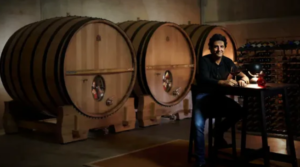
A – Aperture
Technical term: Aperture is the narrow opening through which the wine is allowed to flow during the bottling or decanting process. In winemaking, it can refer to the size and shape of openings used for fermentation or pressing. Translation: This is the small opening through which wine flows in certain winemaking processes. It helps control how wine is poured or extracted, kind of like the spout on a teapot.
B – Barossa Valley
Technical term: Barossa Valley is one of Australia’s most famous wine regions, located in South Australia. It’s known for its rich, full-bodied red wines, particularly Shiraz. Translation: Barossa Valley is like the superstar of Aussie wines. Famous for bold reds, especially Shiraz, it’s one of the places where people go to taste Australia’s finest.
C – Clonal Selection
Technical term: Clonal selection refers to the practice of selecting grapevine clones with desirable characteristics, such as disease resistance or specific flavour profiles. Translation: This means choosing the best vines to grow from the best-performing plants, making sure they have traits like better taste or resistance to disease. It’s like breeding the best grapevines for top quality wine.
D – Denmark (WA)
Technical term: Denmark is a cool-climate wine region in Western Australia, known for producing elegant wines, especially varieties like Pinot Noir, Chardonnay, and Riesling. Translation: Denmark in WA isn’t just a country—it’s a wine region that’s cooler than other parts of Australia, and it’s great for producing crisp, fresh wines. It’s where delicate wines like Pinot Noir and Chardonnay shine.
F – Frankland River
Technical term: Frankland River is an important sub-region within the Great Southern wine region of Western Australia, known for its cool climate and high-quality Riesling and Shiraz. Translation: Frankland River is a cool and quiet part of WA where Riesling and Shiraz grapes grow really well, producing some of the finest wines in the state. It’s the place for crisp white wines and bold reds!
G – Gingin Clone
Technical term: The Gingin Clone is a particular clone of Chardonnay that’s widely grown in Western Australia and is prized for producing wines with richness and complexity. Translation: The Gingin Clone is a specific type of Chardonnay vine that’s well-suited to WA’s environment. Wines made from it are full of flavour and often have a rich, creamy texture.
H – Houghton
Technical term: Houghton is one of Western Australia’s oldest and most respected wineries, founded in 1836, located in the Swan Valley. It’s known for producing quality wines, particularly whites and blends. Translation: Houghton is like the grandparent of WA wineries. It’s been around for ages (since the 1800s) and makes some seriously good wines, especially white wines and special blends.
I – Indigenous Yeast
Technical term: Indigenous yeast refers to the natural yeast strains present on the grape skins or in the winery that are used for fermentation, rather than commercial yeast. Translation: Indigenous yeast is wild yeast that’s naturally found on the grapes and in the winery. Winemakers sometimes use this instead of adding factory-made yeast for a more “natural” fermentation process, which can give the wine unique flavours.
L – Leeuwin Estate
Technical term: Leeuwin Estate is one of the most famous wineries in the Margaret River region of Western Australia, known for its premium Chardonnay and Cabernet Sauvignon. Translation: Leeuwin Estate is a big name in Margaret River, known for producing top-tier wines like Chardonnay and Cabernet Sauvignon that are recognised around the world. It’s a must-try for wine lovers.
M – Margaret River
Technical term: Margaret River is one of Western Australia’s most prestigious wine regions, known for its exceptional Cabernet Sauvignon, Chardonnay, and Sauvignon Blanc. It has a maritime climate, perfect for wine growing. Translation: Margaret River is the wine lover’s paradise in WA, famous for its rich reds like Cabernet Sauvignon and its elegant whites like Chardonnay. It’s like the Napa Valley of Australia but by the beach!
N – New World Wines
Technical term: New World wines refer to wines produced outside of the traditional Old World regions (like France or Italy), particularly from countries like Australia, the US, and South America. Translation: New World wines are wines from newer wine regions, like Australia, which aren’t as old as places like France. They’re often fruitier and bolder in flavour.
P – Pemberton (WA)
Technical term: Pemberton is a wine region in Western Australia’s southern region, known for producing cool-climate varieties such as Pinot Noir, Chardonnay, and Merlot. Translation: Pemberton is a smaller, cool wine region in WA where wines like Pinot Noir and Chardonnay thrive. It’s a great place for elegant, fresh wines.
Q – Quinine
Technical term: Quinine is a bitter compound sometimes found in wines, particularly in older bottles or wines with high acidity, and it can contribute to the overall flavour profile. Translation: Quinine is a bitter taste you might notice in some wines, especially older ones or those with a bit more tartness. It’s similar to the taste of tonic water.
R – Riesling (Western Australia)
Technical term: Riesling is a white grape variety that grows particularly well in cooler Western Australian regions, like the Great Southern. It’s known for producing wines with high acidity and floral aromas. Translation: Riesling is a white wine that’s crisp and full of fresh, fruity flavours. In WA, it’s especially good in cooler areas, where it produces wines that are zingy and full of personality.
S – Swan Valley
Technical term: Swan Valley is one of the oldest wine regions in Australia, located just outside of Perth in Western Australia. It’s known for a variety of wine styles, including rich reds, fortified wines, and vibrant whites. Translation: Swan Valley is the go-to wine region near Perth, WA. It’s been around for ages and has a real mix of wines, from bold reds to sweet fortified wines. It’s easy to visit if you’re in Perth.
T – Tempranillo
Technical term: Tempranillo is a red grape variety originating from Spain, but it’s increasingly being grown in Western Australia, particularly in the warmer, inland areas. It’s known for its red fruit and earthy flavours. Translation: Tempranillo is a Spanish grape that’s starting to do well in WA. It makes wines that taste fruity with a bit of earthiness—think of it like a lighter red wine with a smooth texture.
V – Vasse Felix
Technical term: Vasse Felix is a pioneering winery in Margaret River, Western Australia, known for producing premium wines, particularly Cabernet Sauvignon and Chardonnay, with a focus on traditional winemaking methods. Translation: Vasse Felix is a name you’ll hear a lot in Margaret River. They make premium wines like Cabernet Sauvignon and Chardonnay and are known for their commitment to quality and tradition.
W – Wilyabrup
Technical term: Wilyabrup is a sub-region of Margaret River, Western Australia, known for producing high-quality Cabernet Sauvignon, Chardonnay, and Merlot. It’s one of the first areas in Margaret River to be planted with vines. Translation: Wilyabrup is a special area in Margaret River where some of the best wines, like Cabernet Sauvignon, are grown. It’s like the heart of the Margaret River wine region.
Z – Zinfandel
Technical term: Zinfandel, a grape variety originally from Croatia and popular in California, is also grown in Western Australia. It’s known for its rich fruit flavours and high alcohol content. Translation: Zinfandel is a big, bold red that comes from places like California and WA. It’s fruity and rich, often with a little kick of alcohol that makes it stand out.


